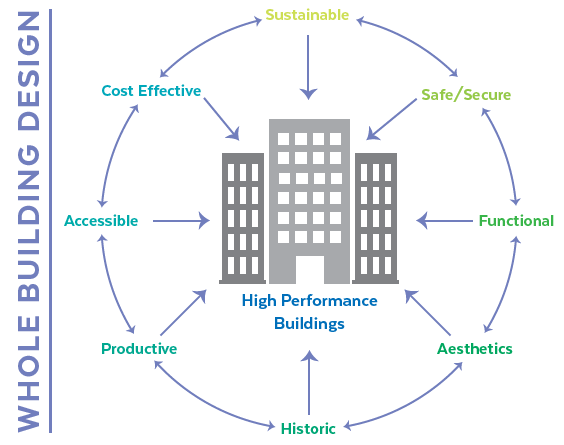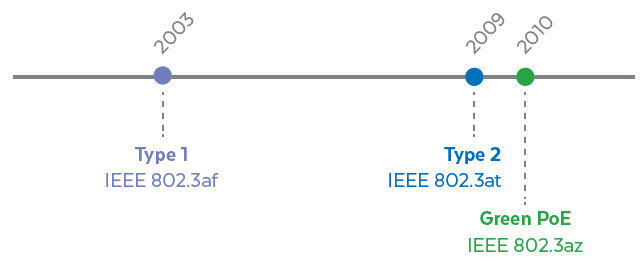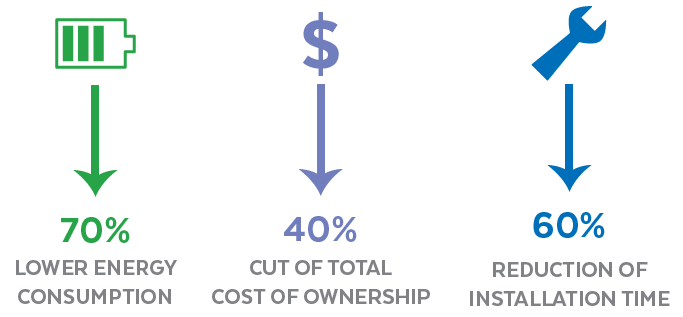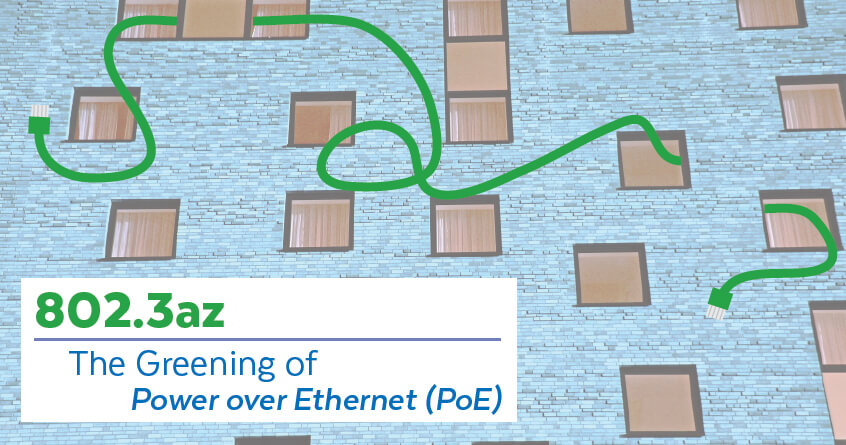The need to conserve natural resources and to protect the environment has become an increasingly important trend. When people commit to protecting the environment, they begin to notice things like how much energy is in use. We see sustainability in the production of things like food, beverage, and consumer goods, healthcare delivery, industrial manufacturing operations, transportation services, and energy production.
Thanks to data-driven insights over the last decade, society is tightening the reins on power consumption. This awareness gave rise to Green PoE (Power over Ethernet), also known as IEEE 802.3az.
Energy Efficient Ethernet (EEE) implements physical (PHY) layer transmission to consume less power during periods of low data activity. Also known as the IEEE 802.3az, this green PoE technology leverages enhancements to the twisted-pair and backplane of Ethernet computer networking standards to reduce power consumption at a rate of up to 50 percent or more while retaining full compatibility with existing equipment.
Backplane refers to the capability of linking a group of parallel electrical connectors that together form a bus. This configuration provides stability and integration within the circuits of a PoE switch. The sustainability factor comes with how this allows the PHY layers to save on power consumption, an important consideration when it comes to low or zero impact structures.
With an increasing emphasis on the Whole Building Design Approach, the integration and optimization between all measures of this design approach are encouraged. It is important to note that many green building programs also help foster this balance by requiring mandatory attention to all of these design principles, not just one area.

Builders interested in using the whole building approach will consider the following eight design objectives in order to create a high-performance home: accessibility, aesthetics, cost- effectiveness, functionality, productivity and health, history, safety/security, and sustainability. Unlike the more traditional approach in which design decisions are made one after the other, the whole building approach relies on careful consideration and integration of all key design objectives during every phase of the project.
The History of Green Ethernet

The Institute of Electrical and Electronics Engineers (IEEE) task force began a discussion on developing the 802.3az standard in November 2006 and initiated the process in earnest the following May. The final standard was officially ratified in September 2010.
The name Green Ethernet came before IEEE 802.3az was officially ratified—thanks to the power reduction implementations in the PHY layers, by not using it to transmit “constant and significant” energy when data is not being transmitted.
By adding firmware that detects when data is not required, the firmware is told to switch into a low-power state or “idle” (LPI), like the engine of a car. Here’s how it works:
- The PHY sends LPI symbols for a specified time period.
- This disables the transmitter.
- Refresh signals are sent periodically to maintain link signaling integrity.
- When there is data to transmit, a normal IDLE signal is sent for a predetermined period of time.
- The data link is considered to be always operational, as the receive signal circuit remains active even when the transmit path is in sleep mode.
Green PoE Wins Best Communication – Wired Category Award
The 802.3az dealt with a problem that had yet to be addressed. The article, IEEE 802.3az Wins Best Electronic Design Award provides context behind why LPI advancement was key for sustainability.
Idle networks consume a substantial amount of energy. In fact, according to the ITU World Summit on the Information Society, electricity demand by the ICT sector for industrialized countries runs between five and ten percent of total electricity demand. About 50 percent of this electricity is wasted by equipment that is powered on, but idle.
By addressing this issue, the 802.3az solved a huge sustainability problem in powered device power consumption.
The Sustainability Benefits of Green Ethernet Now
Not surprisingly, the 802.3az has gotten more efficient. Recently, TradeArabia announced even higher levels of conservation through the use of fiber.
Fibre To The Office (FTTO) architecture can reduce energy consumption by as much as 70% lower, cut total cost of ownership by 40%, and reduce installation time by 60%. What’s more, the added flexibility means networks can accommodate changes in building layout and function and cabling can stay supporting consecutive generations of equipment.
Arafat Yousef, Managing Director – Middle East & Africa, Nexans Data Network Solutions.

Just like the repurposing of legacy copper and Ethernet cabling in commercial office buildings from earlier telecoms installations in the late 1980s, expensive recabling will become unnecessary. And right on time, because with the push toward wireless innovation, reuse of cabling makes economic sense. In essence, the 802.3az has not only made it possible to lower energy bills but has also significantly delayed the need for re-cabling in commercial and multi-family residential structures.
The FTTO principle also applies to Fiber to the Home (FTTH)—especially to multi-family dwellings that have similar in-building fiber installations. Also, because of the current pandemic, workers rely on FTTH as their employers in some states are still asking that they work from home.
A Little About Fiber To The Home (FTTH) Networks
DiamondNet defines Fiber To The Home (FTTH), also called Fiber To The Premises (FTTP), as follows:
Fiber to the home (FTTH) is the delivery of a communications signal over optical fiber from the operator’s switching equipment all the way to a home or business, thereby replacing existing copper infrastructure such as telephone wires and coaxial cable. Fiber to the home is a relatively new and fast growing method of providing vastly higher bandwidth to consumers and businesses, and thereby enabling more robust video, internet, and voice services.
According to TechTarget, FTTH works like this:
FTTH access networks are basically structured like this: fiber optic cables run from a central office, through a fiber distribution hub (FDH), then through a network access point (NAP), then finally into the home through a terminal that serves as a junction box.

It is important to note that FTTH networks:
- Don’t stop at a wall. They connect devices from an office to a home.
- Can reach Gigabit speeds.
- Are a hybrid ecosystem of fiber optic and twisted-pair Ethernet.
The Benefits of FTTH
If you compare any other broadband connection types with FTTH, you will find that FTTH is a far more effective way of delivering digital data over long distances.
Here’s a list of the advantages of fiber:
- Can transmit information 400 times further and 10 times faster
- Unlimited bandwidth capacity
- Can carry ten times more data
- Costs about the same
- More secure, reliable, and durable. Can last 30-50 years.
- Not susceptible to tapping
- Resistant to electrical noise, interference, and voltage surges.
The Future of FTTH
The use of FTTH has increased dramatically in the last ten years. As of September 2018, 18.4 million homes in the U.S. have access to direct fiber broadband. And many network providers—both large and small—are investing heavily in this industry.
Also, Future Market Insights forecasts the global FTTH market value will grow from $9.5 billion in 2017 to over $37 billion by the end of 2027—a 14.4% compound annual growth rate (CAGR).
Learn more about the full range of PLANET Technology PoE products.
Where to Learn More About FTTH
To learn more about FTTH, check out these websites:
